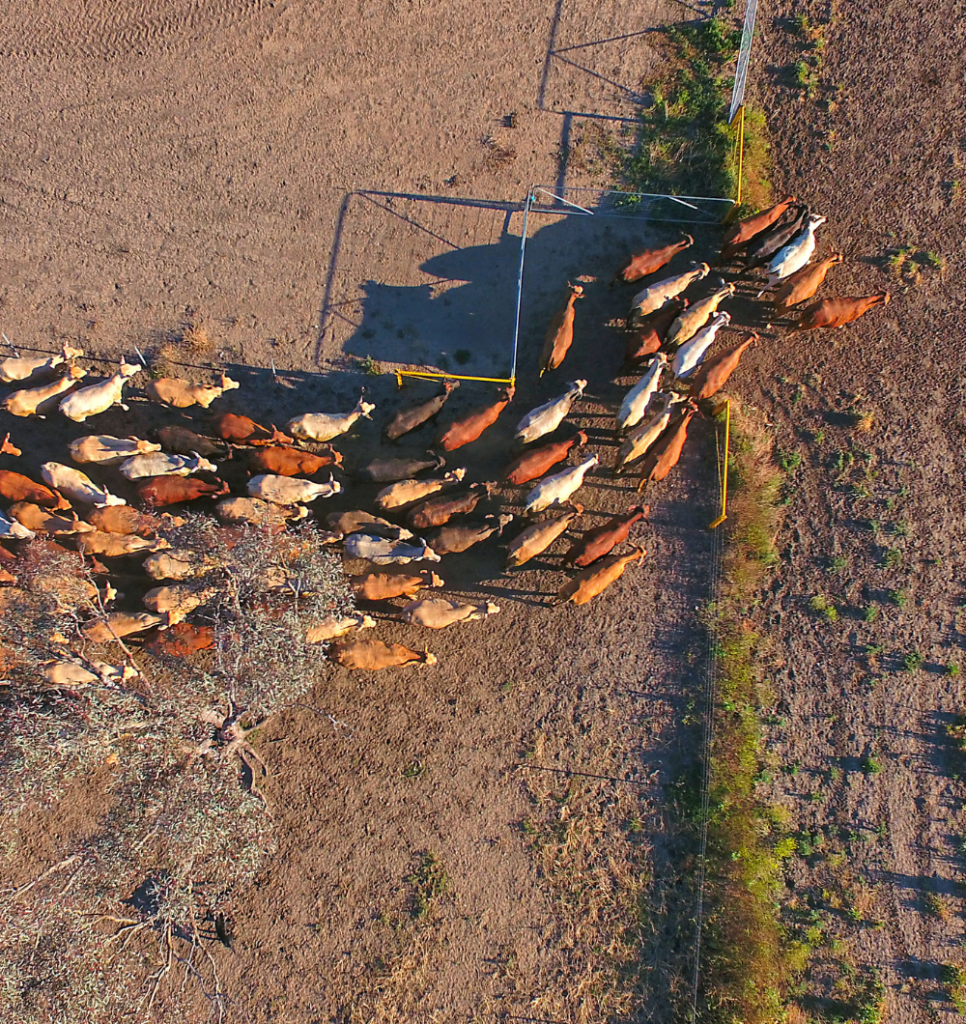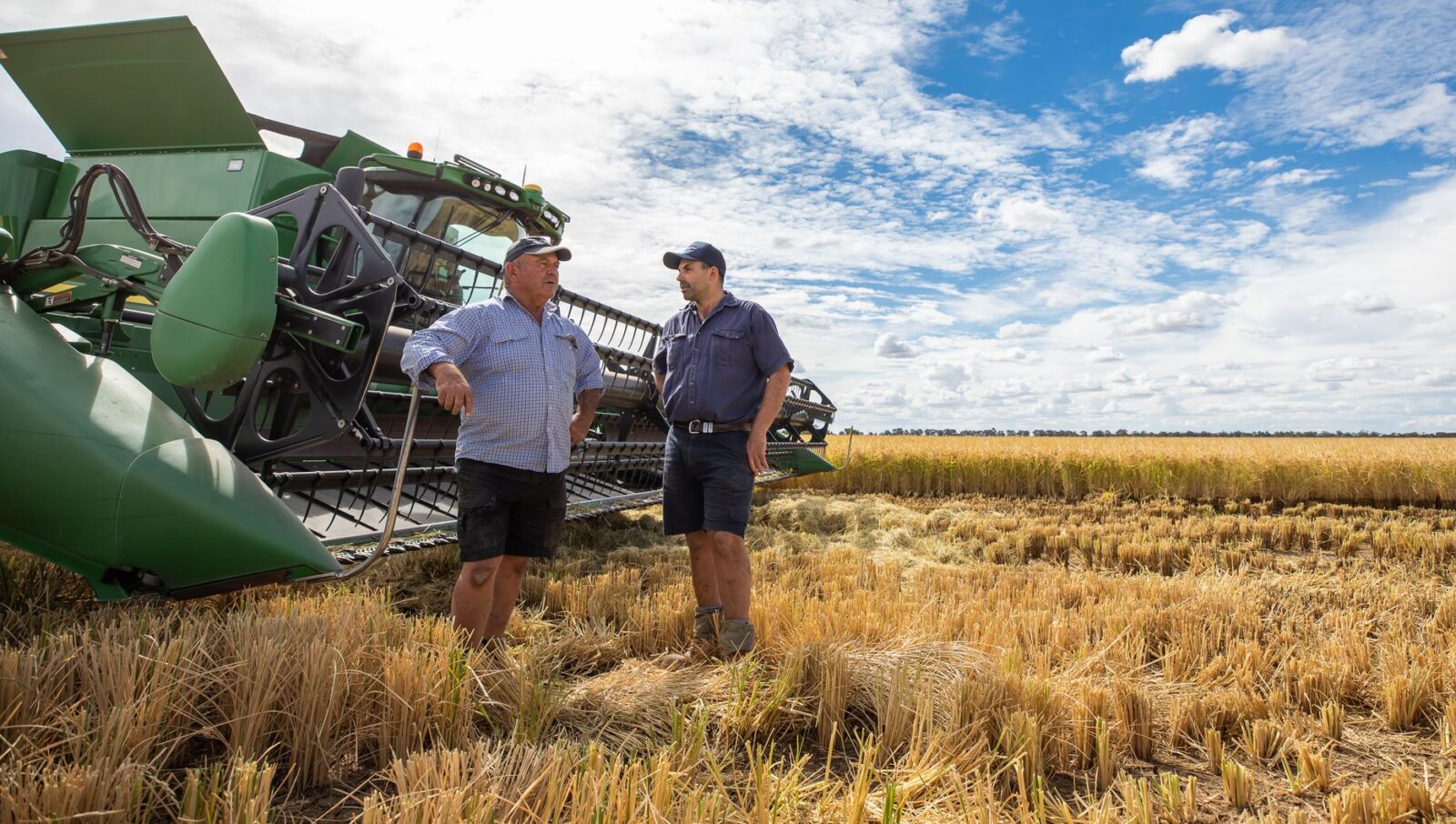
Community Perceptions and Worker Experiences Program
Research overview
The Community Perceptions and Worker Experiences Program aims to deliver insight into community perceptions on working in agriculture, fisheries and forestry industries, and explore worker experiences and the impact they have on workforce attraction and retention.
The Program will inform actions to improve the sector’s capacity to attract and retain workers as well as establish a baseline against which industry can measure effectiveness of further interventions.
The Community Perceptions and Worker Experiences Program is one component of the AgATTRACT initiative and contributes to the achievement of the Human Capital tranche of measures responding to the National Agricultural Workforce Strategy: Learning to excel in the Agriculture 2030 package. The Program is funded by the Department of Agriculture, Fisheries and Forestry.
A key component of the Program is gaining a comprehensive and accurate understanding of modern agriculture and its workforce, was through in-depth research activities and analysis. The Program’s quantitative research has built a baseline for workforce perceptions to inform the sector about the drivers for workforce attraction and retention opportunities. The qualitative research has developed a knowledge base around the experiences of prospective, existing and past workers in rural industries.
Reports


Qualitative research results
Find out moreAdditional Community Perceptions and Worker Experiences projects
Cultivating the Next Generation
The Cultivating the Next Generation project aims to help teachers and career advisors provide accurate and high-quality advice to secondary students about the diverse career opportunities in agriculture.
The project was funded by the Department of Agriculture, Fisheries and Forestry, recognising the future workforce is dependent on the next generation seeing agriculture as an employer of choice, and critical to this is the role educators play in encouraging students towards a career in agriculture.
Led by AgriFutures Australia with CQUniversity Australia completing the research and national outreach, Stage 1 of the project aimed to better understand educators’ perceptions and knowledge regarding the agricultural industry and careers in agriculture, offering valuable insights into the perspectives and challenges faced by classroom teachers, career advisors, and school leadership.
Stage 2 of the project developed, delivered and evaluated the five resources recommended in the Stage 1 findings.
- Curriculum-aligned lessons for five subject areas including Agriculture, Science, Food Technology, Business, and Digital Technology;
- 20 video case studies of industry ambassadors showcasing the diverse range of jobs in agriculture;
- Industry incursions and excursions across every state and territory that involved 19 schools, 514 students and 35 teachers;
- Work placement guides for industry, schools and students to assist with organising valuable work placements for students;
- In person and online professional development workshops that delivered training to 247 educators to increase their confidence to promote careers in agriculture.
- Each resource was trialled through a national outreach program designed to enhance Year 9-12 students’ and educators’ knowledge and perceptions of the numerous agricultural career opportunities across Australia.
Explore the project and resources
Understanding First Nations engagement with Australia’s agricultural workforce
This project is currently in delivery phase.
Despite the growing demand for an agricultural workforce in Australia, First Nations people are underemployed across the sector, representing just 2.1% of the workforce with the inclusion of aquaculture, forestry and logging and agricultural support service.
The current workforce of around 6,000 First Nations people represents a significant decline from previous decades.
The agricultural sector has identified an opportunity to explore diversification and inclusivity of its workforce. This will include engagement and connection with First Nations communities –in particular, those located in communities with agricultural industries.
This project seeks to answer four key questions that it will attempt to respond to through both the Case Studies and final Report:
- Who are the First Nations owned agricultural businesses in Australia that have successful levels of workforce engagement with the First Nations community, and what initiatives or programs are they facilitating to ensure continued engagement?
- What are the most preferred ways of engagement / consultation of the agricultural workforce from the perspective of First Nations Communities across specific geographical locations of Australia that align with agricultural operations?
- How can a united approach, developed respectfully on the basis of preferred connection strategies for First Nations communities, be established and advocated to promote engagement with the agricultural workforce on a wider basis?
- What are the ongoing support and evaluation measures to ensure recommendations produced from research initiatives are successful, maintainable and adaptable?
Community Perceptions and Worker Experiences Program: Quantitative research summary
The key focus of this work was establishing the foundational data needed to understand modern agriculture and its workforce.
Publication
Community Perceptions and Worker Experiences Program: Qualitative research summary
The focus of this work was delivering key insights into community and worker perceptions of working in the agriculture, fisheries and forestry sectors, and the real-world experiences of those workers.
Publication

national challenges and opportunities
Worker experiences case study: Jess Nottle, DLF Seeds
DLF Seeds production agronomist Jess Nottle never thought she’d work in agriculture or with farmers, now a typical day involves advising farmers on how to grow their seed crops.
Case study

national challenges and opportunities
Worker experiences case study: Tom Shaw, InvertiGro
While studying food science and agribusiness Tom Shaw uncovered the agtech ecosystem and was enthused by indoor farming which led him to InvertiGro, where he is pushing what’s possible and redefining the traditional definition of agriculture.
Case study

national challenges and opportunities
Worker experiences case study: Audrey Keck
Audrey Keck has always been interested in working outdoors with animals. But without family connections to rural industries or a farming background, she thought her dream would never become a reality.
Case study

national challenges and opportunities
Worker experiences case study: Georgia Beattie
After growing up in metropolitan Melbourne, Georgia Beattie embarked on a career in technology. Working in rural industries had not entered her mind until she was diagnosed with an autoimmune disease, which led her to research different foods and how they were produced.
Case study

national challenges and opportunities
Worker experiences case study: Tim and Mark Kingma
Growing up on a pig farm at Kerang in northern Victoria meant brothers Tim and Mark Kingma pitched in and helped the family business in their spare time. But after finishing school, they had their sights set on very different career paths.
Case study

national challenges and opportunities
Worker experiences case study: Trish Hammond
With the arrival of her third child, Trish Hammond’s career path took a new direction. The nurse and her dairy farmer husband Mark wanted to raise their kids in the country and have flexibility in their work-life balance.
Case study
Frequently asked questions
What is the aim of the Community Perceptions and Worker Experiences Program?
The Community Perceptions and Worker Experiences Program aims to deliver insights into community perceptions about working in rural industries, as well as explore worker experiences and the impact they have on workforce attraction and retention.
The Community Perceptions and Worker Experiences Program is a component of the Australian Government’s AgATTRACT initiative and contributes to the achievement of the Human Capital tranche of measures responding to the National Agricultural Workforce Strategy in the Agriculture 2030 package.
The Program is being administered by AgriFutures Australia and is being delivered under National Challenges and Opportunities focus area, as set out in the Strategic Plan 2022-2027.
Why is this research being funded?
In providing insights and research findings about how a job in rural industries is perceived by the community, and what drives current workers to stay in or leave rural industries, the Program aims to provide recommendations to improve workforce retention and attraction.
The Program also aims to better inform the Australian community and jobseekers about what a job in rural industries involves and improve understanding of the workforce opportunities in a modern agriculture, fisheries and forestry sector. Furthermore, with this greater understanding, there will be a greater appreciation of the choices and pathways available to enter the agricultural workforce.
The Program challenges gender based and outdated perceptions of modern agricultural work and will inform actions to improve the sector’s capacity to attract and retain workers and establish a base line against which industry can measure the effectiveness of further interventions.
Who is involved in the Program?
A series of online roundtables were held with stakeholders including government, farming groups and education providers. Briefing sessions with a cross-section of industry
groups in the agriculture, fisheries and forestry sectors were
also held.
Seftons & Associates was appointed to manage the Program delivery, data science company Voconiq was appointed to complete the quantitative research and social Research Group so it reads Wallis Research Group completed the qualitative research.
In addition, an interactive forum was held in August 2022 with a cross-section of stakeholders to facilitate in-depth consideration of the research data and what it meant for individual industries within agriculture, fisheries and forestry.
AgriFutures Australia administers the Program. A Steering Committee was established to guide the delivery of the Program, comprising representatives from Department of Agriculture, Fisheries and Forestry (DAFF), AgriFutures Australia, Primary Industries Education Foundation Australia, (PIEFA), SkillsOne, National Farmers’ Federation, (NFF), Dairy Australia and the National Careers Institute (NCI).
How is the research being undertaken?
There are two components of the Program, quantitative and qualitative research.
Quantitative research:
The quantitative research aimed to establish a baseline for workforce and community perceptions, identify key drivers of workforce retention and talent attraction and provide recommendations to improve workforce retention and attraction.
A series of interviews and online roundtables with industry stakeholders informed the development of the quantitative survey, completed between May and June 2022. Cluster and path analysis were used to identify the main drivers of attraction and retention, which are the basis for industry recommendations.
Qualitative research:
The research was designed to understand what the general population and future workers’ beliefs are about rural industries, reveal details on the experiences of workers in rural industries and to identify what the push and pull factors are for worker attraction and retention.
The qualitative research involved a combination of focus groups and in-depth interviews with targeted stakeholders. Specifically, 43 in-depth interviews were carried out with innovators, workers and prospective workers, and four focus groups were held between May and August 2022. A thematic analysis of the data was conducted to identify patterns and themes.

